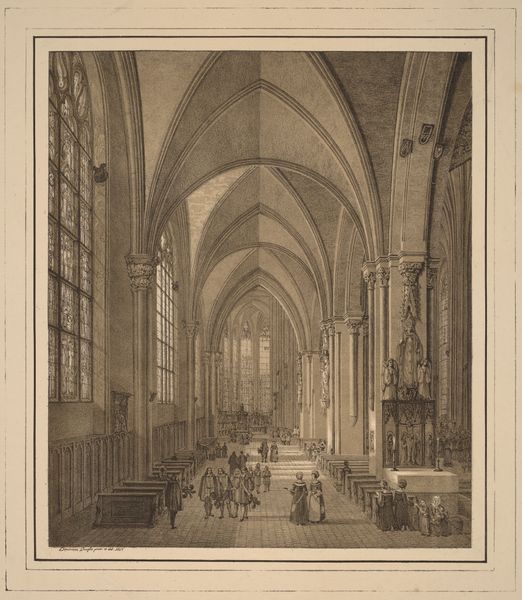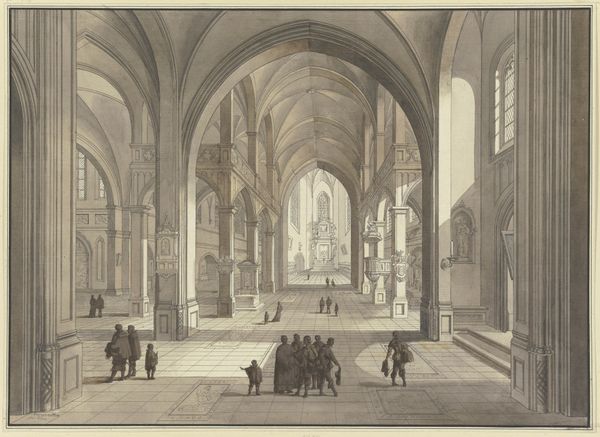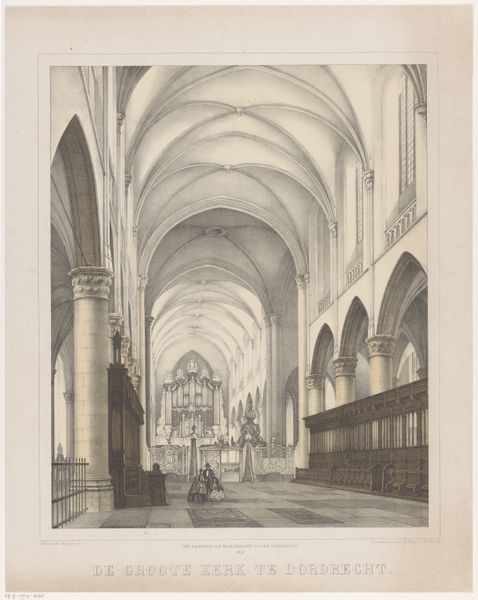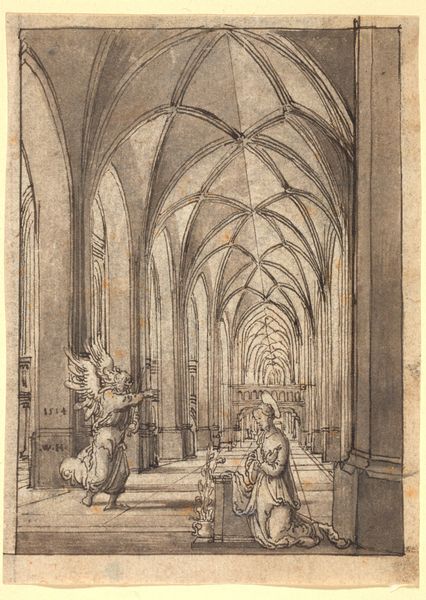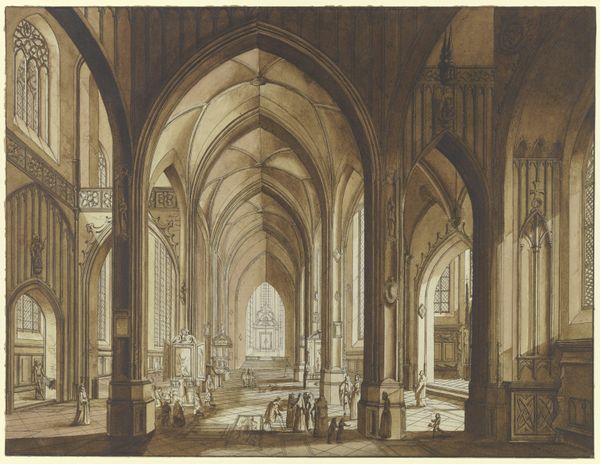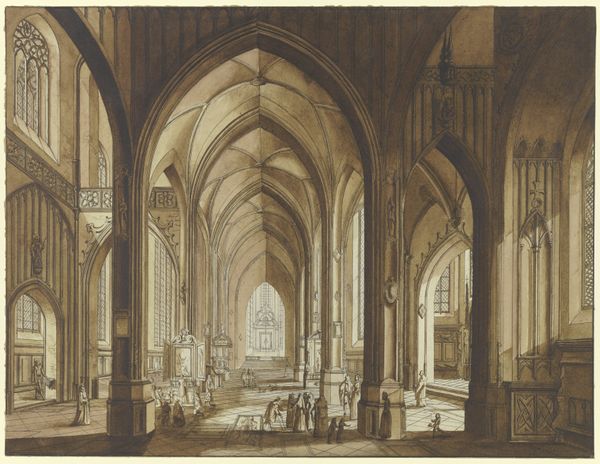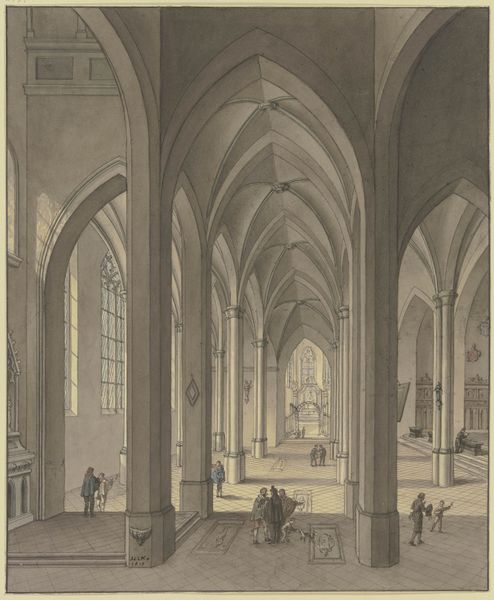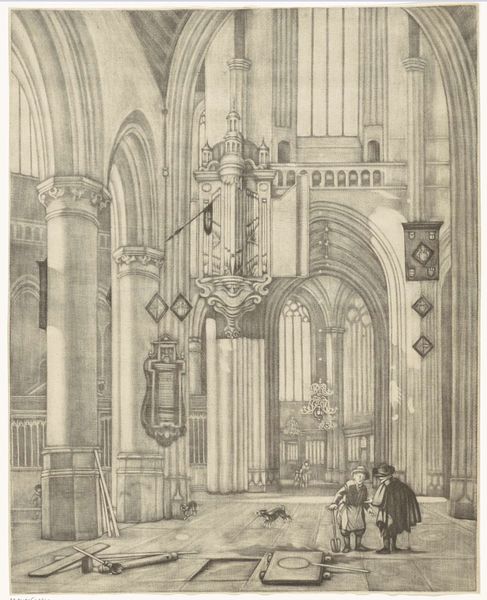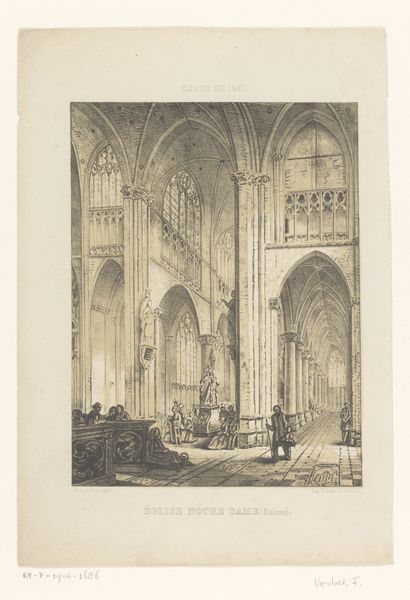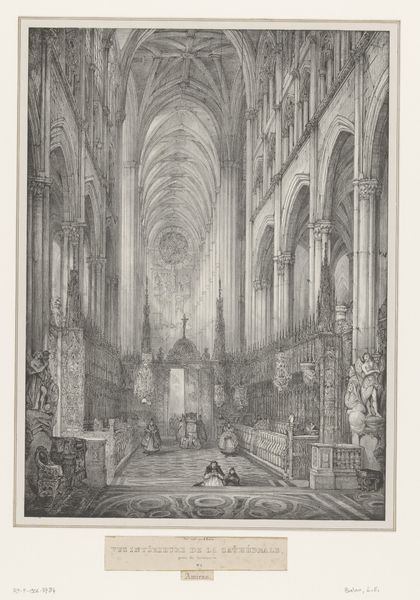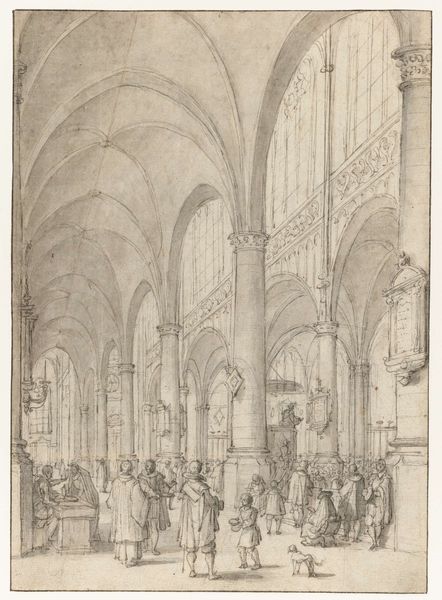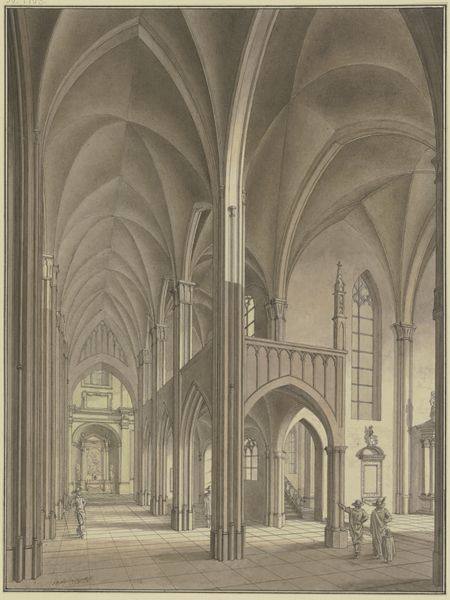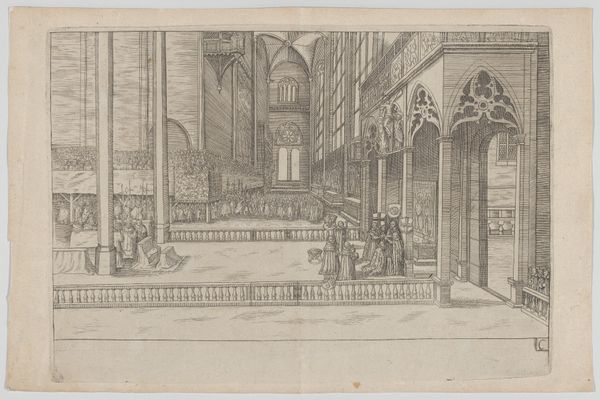
print, engraving, architecture
#
baroque
# print
#
perspective
#
history-painting
#
engraving
#
architecture
Dimensions: height 313 mm, width 413 mm
Copyright: Rijks Museum: Open Domain
Curator: So here we have Hendrik Causé's 1699 engraving, "Doksaal in de kerk van de Sint Michielsabdij in Antwerpen," or "Screen in the Church of the Saint Michael's Abbey in Antwerp." The piece gives us an intimate view into the Baroque architecture of the time. Editor: Wow, my first thought is, this space feels overwhelmingly performative, right? The way the light filters through the windows and illuminates certain areas, and this incredible depth of field achieved by the engraver almost turns the building into a stage set. Curator: Exactly, Hendrik Causé was part of a broader movement that employed rigorous linear perspective to not only depict but also ideologically frame these sacred spaces. Look how the checkered flooring draws your eye relentlessly to the altar. The composition functions as an endorsement of religious authority and spatial control. Editor: And all of those architectural flourishes! It’s so ornamental it's almost dizzying. Each pillar is a monument. I can't help but think about the stories—the human stories—lost under all of this opulence. Who was sweeping these floors, year after year? What did they think of these grandiose displays? Curator: Those are crucial questions to consider. The Abbey was situated in a region deeply marked by colonial ventures and shifting social hierarchies. Art like this actively participates in and reflects those dynamics, celebrating power and wealth against a backdrop of enormous social upheaval. Editor: I feel like that almost claustrophobic level of detail, the obsessive patterning, hints at an almost frenetic anxiety humming beneath the surface. As if they’re trying to fill every inch to keep something unnamed out. Curator: That’s an intriguing reading. Viewing it through the lens of post-colonial studies opens possibilities. It is about more than architectural space; it is also about occupied space, performed devotion, and the visible symbols of an empire struggling to define itself. Editor: Seeing it that way makes this 17th-century print even more fascinating and unsettling. Who knew that a seemingly straightforward architectural rendering could hold so many buried stories? Curator: It’s in that very tension between precision and expressiveness, the visible and the invisible, that the lasting relevance of artworks like these really lies, I think.
Comments
No comments
Be the first to comment and join the conversation on the ultimate creative platform.
